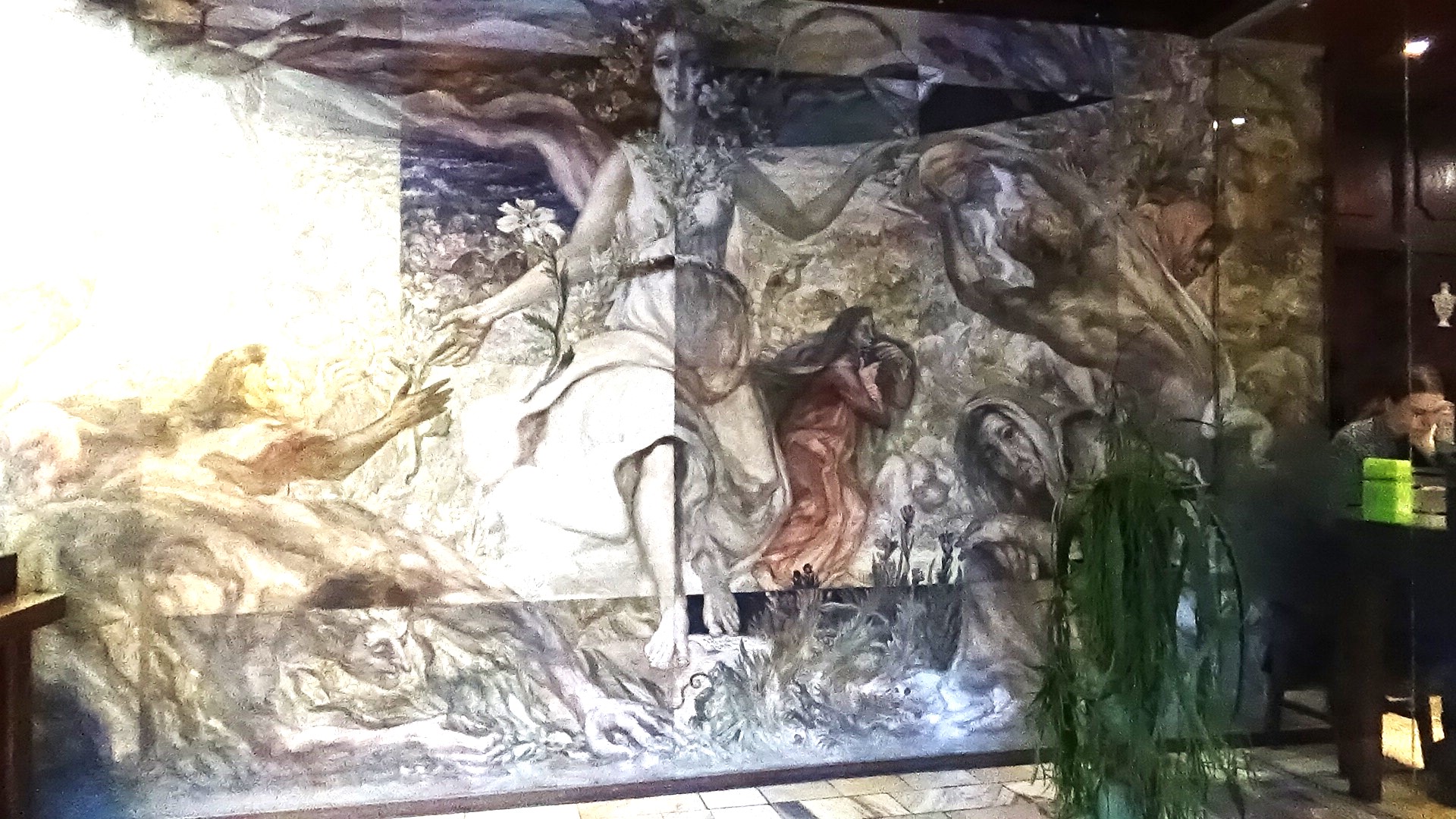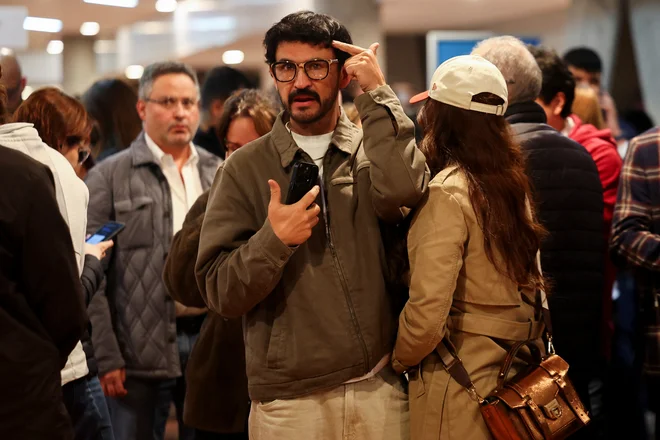Ornate pharmacies both fascinated and surprised

Created the distinctive environment
The initiator of the decoration of Lithuanian pharmacies was Vytautas Sedelskis (1928-2010). V. Sedelskis, the manager of the Klaipėda Chief Pharmacy Board (1964–1971), the manager of the Kaunas Correctional Office (1971-1989), V. Sedelskis sought to show that post -war pharmacy interiors do not meet human needs: they need to be changed, zoomed into a person, creating a cozy, distinctive, memorable environment.
He sought to make the interior made of durable materials, and wanted architects and artists to work closely with pharmacists and a pharmacy to create an environment with comfortable work and recreation spaces.
In cooperation with architects A. Mačiulis, Z. Rutkauskas, V. Krasauskas, Z. Rimkevičius, J. Maciulevičius, J. Jucaitis, R. Gumbaru, V. Budvytis, G. Tiškus and decorative art creators V. Stasaitienė, J. Miškauskienė, J. Leskauskienė, D. Murauskaitė A. Kmieliauskas, S. Petraitis, L. Strioga, E. Jovaiša, A. Goose, V. Sedelskis initiated more than 200 projects for renovation of Lithuanian pharmacy interiors, 160 of which were designed by architect Jonas Maciulevičius.
The projects were not repeated. Soon a new 2,000 sq. M. m workshops where original furniture was created for the drawings of architects for pharmacies.
Newborns received names
Old pharmacies are called the names of saints, animals (swans, lions, eagles) or pharmacies. The name of the owner in the pharmacy’s signboard was a guarantee that a person is responsible for his or her pharmacy.
During the post -war period, the names of all pharmacies operating during the interwar period were changed by numbers. The abundance of those numbers was very misleading to people. The idea of renaming the pharmacies was not given to V. Sedelski, but it was necessary to wait for a favorable time for such transformations.
Finally, 1977. At the meeting of Lithuanian architects, the Kaunas Executive Committee approved the list of names of the city pharmacies in the initiation of V. Sedelskis and his colleagues. All pharmacies chose the names, so it was decided to prepare the celebration on the occasion.
1977 36 pharmacy christenings were organized in Kaunas. The festivities took place at Kaunas Musical Theater. The theater hall was full. Newborn baby pharmacy received « birth certificates » and commemorative gifts with engraved pharmacy names, the old pharmacies just got names with a diploma. « Sun », « Dainava », « Lino », « Castle », « Ring », « Theater », « Oak » and more. The names of the pharmacies changed those meaningless numbers.
It is a pity that after buying pharmacies for networks, almost all of the names so hard have been replaced by numbers, names or names of pharmacy networks that have no links with the history of pharmacies.
Unique: only one of the original interiors in Kaunas, with the symbolic name – « Hope », remained in Kaunas. To this day, a huge mural of A. Kmieliauskas is boasting at the Pharmacy in Laisvės Alley. / Photo by A. Rudžianskaitė’s personal archive
A lot of attention to lighting
The masters of glass (original luminaires) were also included in the work of medicinal interiors. The lighting was very important in the interiors of pharmacy in the seventies. There was a focus on both natural and artificial lighting.
When forming natural lighting, the required ratio of the window to the floor area was to be maintained. This led to the fact that their windows occupied most of the facade as new pharmacies.
The arrangement of the furniture depended on where the light entered the room, as the employee had to fall from the left or the front and by no means from behind.
Loos are allowed to treat lighting in visitor halls. Here, the luminaires may have been covered and not covered, using luminaires or lamp groups. The luminaires were built into artistically composed decorative elements made of wood, metal, plaster, and painting elements could have been used.
There is only one of the original pharmacies in Kaunas, with only one symbolic name « Hope ». Her fate is unclear. Competition is huge, no help.
We can see how much ingenuity and craftsmanship we can see in Hope pharmacy luminaires. Medicinal official luminaires create a play of light that enliven the environment. Often, the geometric shapes used in furniture production were reflected in the medicinal luminaires.
Tourist attraction
The ornamentation of the pharmacies was of interest and was written in newspapers, magazines, calendars. Therefore, the following questions were raised: how did you achieve a level that Kaunas pharmacy’s peculiar interiors can race with cultural and art institutions, restaurants that do not shy away from decoration? Do you need it?
According to V. Sedelski, the pharmacies were adorned with the pharmacists themselves at their own expense, the city only helped the construction of new pharmacies, and overhaul and interiors took care of the pharmacies themselves.
Cautions from the pharmacy made furniture made its own production workshop based on architects’ projects. Polish production typical furniture per room cost about 40 thousand. rubles, and to do themselves, almost three times cheaper. The furniture was produced for each pharmacy individually, trying to design it convenient so that the pharmacy worker could reach 200 names of the names without getting out of his place.
Photo by A. Rudžianskaitė’s personal archive
Pharmacies with larger premises included lounges for workers, separated rooms, drug production facilities, and space for the manufacture of manufactured medicines.
Pharmacies became cozy. There were no two identical ones. Folk motifs – light wood furniture and palah – were eye -catching, and elsewhere – a churing fountain, original luminaires or medicinal plants painted on the walls. Separate cabinets are designed for those who have come or withdraw medicines, comfortable chairs, sofas.
People visiting such pharmacies noticed that it was more comfortable here than in cafes. Pharmacies were also the subject of tourist attraction.
« When the Soviet Lithuania began the ornate pharmacy period, the pharmaceutical system government paid special attention to aesthetic things. At that time, pharmacies were amazed by visitors who had been out of gray Soviet house. On the chic floor.
Searched for peculiarity
The Theater Pharmacy is the oldest in Kaunas. It operated in the same building in Laisvės Alley for 142 years, near the Musical Theater Garden (now this building has Caffeine). The pharmacy was updated in 1978. According to the project of architect J. Maciulevičius. The artist J. Leskauskienė decorated the lobby of the pharmacy, while D. Murauskaitė-Žiliuvienė painted paintings illustrating the stages of pharmaceutical history on wooden panels. The pharmacy furniture was designed by furnitureists A. Ramūnas and P. Mikas. Glass craftsmen created original luminaires that match pharmacy furniture and paintings.
Merit: Pharmacy Decoration enthusiast V. Sedelski and architect J. Maciulevičius sought to create a cozy, distinctive, memorable, memorable the environment. / Photo by A. Rudžianskaitė’s personal archive
One of the interiors where the motifs of folk art were adapted was Kaunas Dainava Pharmacy. The interior design of the pharmacy was prepared by architect J. Jucaitis. The interior was highlighted by the highlights of the old wooden buildings. Natural wood was used to create furniture, trying to replicate the stylized plant motifs used in folk art. Made original chairs decorated with the same motifs. The drug cabinets are decorated like the entire interior to associate modernity with folk art. The cabinets resembled home windows with shutters. Gypsum panels created by J. Miškinytė are created above the office furniture.
The interior of Kaunas Saulė pharmacy was updated in 1975. The project was created by architect Z. Rimkevičius. The drug cabinets and their decor are laid out to create a harmonious rhythm using symmetrically composed elements. The rhythm and the use of the same geometric shape are reflected in the luminaires. The artist S. Petraitis created the original ceramic wall.
The sculptural composition of L. Strioga from ceramics was the highlight of the Pharmacy Pharmacy. The Town Hall pharmacy was decorated with leather articles by E. Jovaiša. One of the oldest wall painting techniques – wall painting (mural) – was also used in pharmacy interiors. The Fresco of the Artist A. Goose, which represents the stages of pharmacy history, gave the « Town Hall Pharmacy » the coziness and ornamentation.
The wall of the Kalniečių Outpatient Clinic is decorated with the image of the artist M. Mikalauskas. The newly opened Gričiupis pharmacy was given the peculiarity of R. Meiis.
Photo by A. Rudžianskaitė’s personal archive
Duty and responsibility
The only one of the 27s 1970-1990. The former interior of pharmacies in Kaunas was preserved by the Hope Pharmacy (Laisvės al. 100), which operates to this day. This is thanks to her manager Arūnas Šiaučiulis. In order to withstand competition with pharmacy networks, it had to be expanded – after the purchase of a nearby building, it opened a « tea », which offers Kaunas residents vegetarian and vegan dishes.
The design of the Interior of Hope Pharmacy was prepared by architect Jonas Maciulevičius. The pharmacy was updated in 1977-1981. Here is a huge mural of A. Kmieliauskas on the wall. Its center shows the allegorical figure of the female – the goddess of medicinal plants, which scatters flowers and herbs.
The pharmacy has original luminaires, furniture, marble wall and floor finish. The head of the pharmacy admits that the old interior is gorgeous, but not very practical. For example, bouquets of icicular bouquets are attracted to dust.
Museum expositions can already be called the premises of the « Hope » pharmacy administration several decades ago. The front part of the desk and the cabinet wall is covered with velvet tapestry, a white wardrobe with flowers.
Similarly, the recreation room of the staff is decorated. The sofas are surviving and tapestry, and over the years, sitting down and losing shape. The renovation of old furniture pharmacy is in no hurry, and it is a greater concern for her competition with large networks.
A. Šiaučiulis believes that a unique pharmacy should be included in the list of attractions in Kaunas, and the city authorities could contribute to its preservation by releasing the land rent. The cry for help from the Pharmacy Director was not answered.
Thus, only one of the original interiors in Kaunas remained only one, the symbolic name – « Hope ». Her fate is unclear. Competition is huge, no help. How to preserve the interior of a pharmacy representing the city (1970-1990) in the city.
Excursions are already on the pharmacy. She is not forgotten. As we scattered the annals of the Pharmacy History, we find out that the pharmacy was founded in this building in 1925. July 8th So soon, the 100th anniversary.










